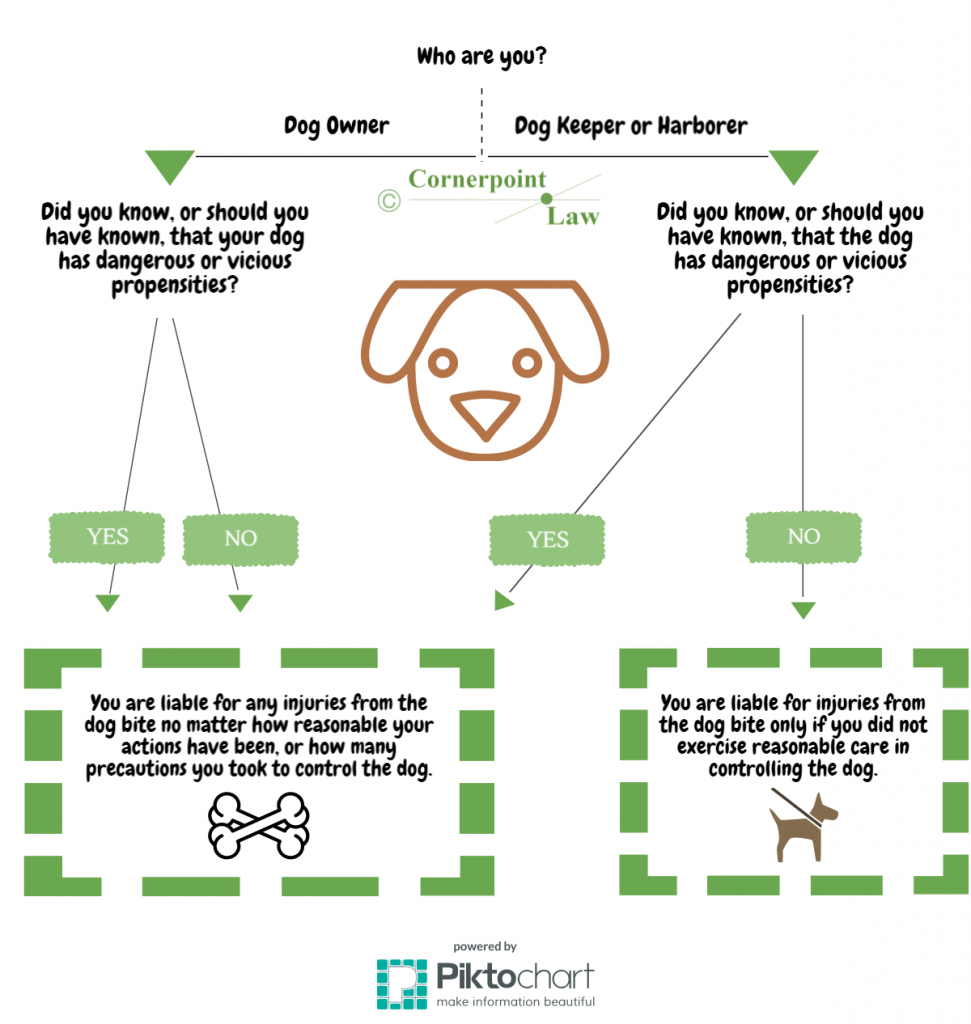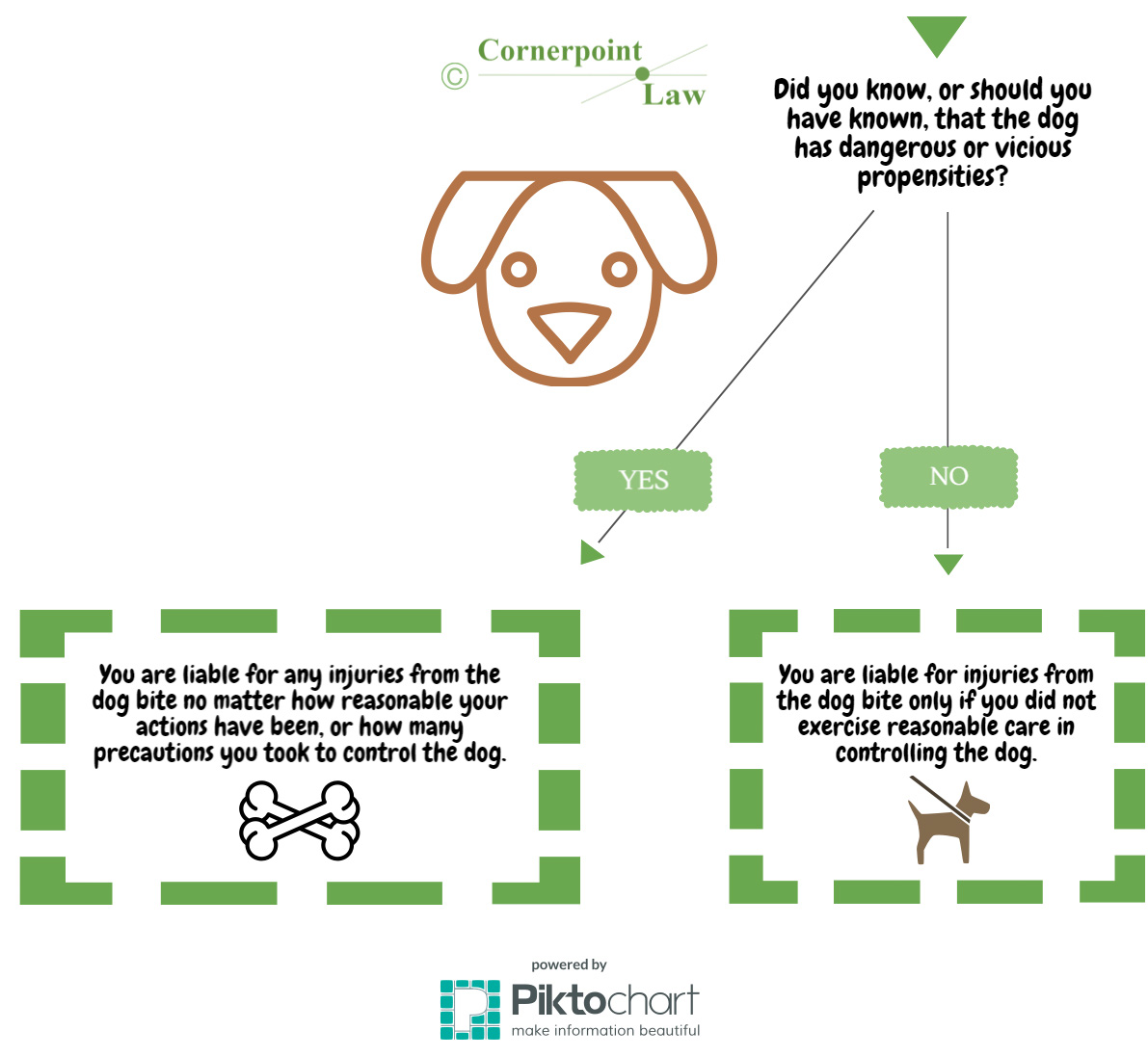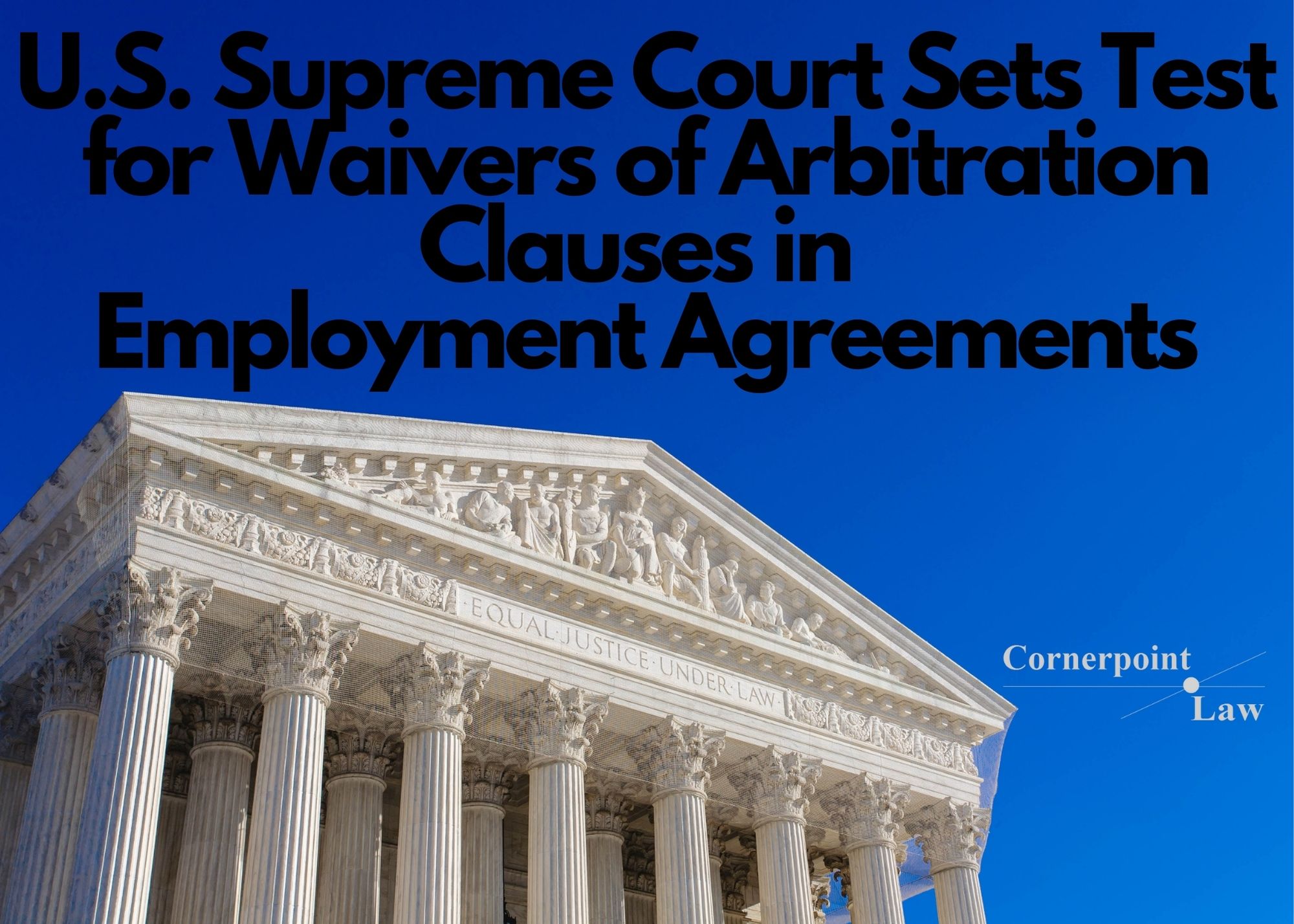Work Like a Dog
March 31, 2016
Unauthorized use and/or duplication of blogposts without express and written permission is strictly prohibited. Excerpts and links may be used, provided that full and clear credit is given, and with appropriate and specific direction to the original content.
The author of this post can be reached by phone at 206-693-2718 or by email.
Dogs in the Workplace: Risks and Tips
by Stacia Hofmann
[This blogpost was updated on June 27, 2016 to reflect the June 14, 2016 decision by Division II of the Washington Court of Appeals in Oliver v. Cook, et al. The new content is noted in purple below.]Should Washington and Idaho employers allow employees to bring their dogs to work?1 A 2012 study by Virginia Commonwealth University showed a decrease in employee stress and an increase in job satisfaction when dogs were present in the workplace.2 A 2015 survey found that 8% of American workplaces allow employees to bring pets to work, up 3% from two years prior.3 There very well may be tremendous advantages to companies, by way of productivity and happiness, if employees bring their dogs to work. But any advantages are not without legal risks that should be considered and managed. This blogpost discusses those risks, with tips for preventing litigation and minimizing losses.
Tort Liability
Despite their high-ranking status as man’s best friend, dogs occasionally bite humans; sometimes as part of a repeated behavioral problem, but many other times in a single isolated incident, and without warning. People injured by dogs regularly file lawsuits and claims.4 According to the Insurance Information Institute, in 2014, over $530 million was paid out to 16,550 people injured by dogs, and the average cost paid out per claim was $32,072.5
Preventing dog bites and dog-related injuries should be a priority for any employer that allows dogs in the workplace. If the dogs interact with customers, clients, or the public, the business has a tort liability risk. (LEGALESE WARNING! “Liability” means “legally responsible.”)
Before we look at the different tort liability rules in Washington and Idaho, note that the law puts a dog into one of two categories: dogs, which are presumed harmless, and dogs that have “dangerous or vicious propensities,” which are not presumed harmless. There is no crystal clear legal definition of a dog with dangerous or vicious propensities, but a dog that has previously attacked or injured someone fits the bill.6
Washington Law
Is a dog owner legally responsible for a dog bite, even if it occurs without warning, the dog has no history of dangerous or vicious behavior, and the owner took reasonable steps to control the dog? Make no mistake: in Washington, the answer is YES! The Washington legislature passed a strict liability statute that makes all dog owners automatically liable for any injuries resulting from dog bites.7 (LEGALESE WARNING! When liability does not depend on negligence or the use of reasonable care, it is called “strict liability.”) In addition, Washington courts have their own law regarding dog bites. When we add the Legislature’s law to the courts’ law, it looks something like this:
The above graphic assumes that the dog bite victim was on public property, or on private property with the owner’s consent, and that there was no provocation of the attack.
If a dog bite causes injuries and occurs on business premises, it is very likely, if not certain, that both the employer and the employee will be named in any resulting lawsuit. No Washington appellate court has decided an employer’s liability when an employee’s dog bites a customer or member of the public on business premises.8 Here are what I believe to be the most likely liability risks to the employer:
Risk #1 – If the dog was on business premises for the employer’s benefit, or the employer cared for and controlled the employee’s dog, there could be enough evidence for the employer to be considered a “keeper” of the dog. As the above chart shows, if the employer is the keeper, then the employer is strictly liable for any injuries if the dog had dangerous or vicious propensities, no matter how many reasonable precautions the employer took to prevent injuries. But, if the dog never exhibited dangerous behavior, the employer is only liable if it was negligent and did not take reasonable care to prevent injuries.9
Risk #2 – “Premises liability” will likely apply. (LEGALESE WARNING! “Premises liability” is the type of liability that results when businesses do not maintain their premises in reasonably safe conditions.) In June 2016, a Washington appellate court decided (for the first time) that dog bites are conditions of the land and are therefore subject to premises liability rules.10 Pursuant to the court’s decision, if an employer knows or should know that an employee’s dog poses an unreasonable risk of harm, and then fails to reasonably protect patrons from the dog, then the employer is likely negligent.
Risk #3 – “Vicarious liability” might impute the dog owner’s liability to the employer. (LEGALESE WARNING! Employers are responsible for the acts of their employees if the employees are acting within the scope of employment. This is called “vicarious liability.” If an employee’s negligence leads to a car accident while en route to a customer, injuring the other driver, then the employer is liable for the employee’s acts. If an employee negligently forgets to follow a safety protocol and a customer is hurt, then the employer is liable for the employee’s failure to act.) A judge11 could find that vicarious liability applies, so that if the employee failed to reasonably control the dog, the employer is also liable. But remember the statute makes the dog owner liable for the dog bite no matter how excellent of a track record the dog has for temperament and behavior. So if a judge decides that vicarious liability applies under the statute, then the employer is strictly liable vis-à-vis the dog owner, even if the dog has never shown any dangerous or vicious propensities and even if the employer and employee took precautions to prevent dog bites.
Idaho Law
There is no dog bite statute in Idaho, so Idaho courts do not legally distinguish dog owners, keepers, and harborers. Using the same chart template for Idaho as for Washington, above, the law for a dog owner, keeper, or harborer looks something like this:

The above graphic assumes that the dog bite victim was on public property, or on private property with the owner’s consent, and that there was no provocation of the attack.
So how do the risks compare in Idaho versus Washington? Similar, except an Idaho employer has less risk because of the absence of a dog bite statute.12 In my opinion, here are the biggest risks:
Risk #1 – If the employee knows, or should know, that the dog has dangerous or vicious propensities, then the employer could be strictly liable regardless of the amount of caution the employer took to prevent the injury. At a very minimum, if the dog has dangerous or vicious propensities, then the employer is liable if it is negligent and failed to take reasonable care to prevent injury.
Risk #2 – Even if the dog does not have dangerous or vicious propensities, a judge could decide that premises liability applies so that the employer is liable if it was negligent and did not use reasonable care to control the dog and premises.
Risk #3 – A judge could decide that vicarious liability applies to the employer if the employee was negligent and failed to reasonably control the dog, even if the employer took reasonable care to prevent injury.
Before we move on, non-bite, dog-related injuries (i.e. from dogs jumping and chasing) are much more common than you might think. The same rules for dog bites outlined above also apply to non-bite injuries, with the very important exception that Washington’s strict liability statute for dog bites does not apply. In other words, a dog owner is not automatically liable for a non-bite, dog-related injury unless the dog has dangerous or vicious propensities.
Workers’ Compensation and Employment Law
Of course, the risk of a dog bite or other dog-related injury extends to employees. If one employee’s dog bites another employee, the employee may file a worker’s compensation claim. If the injury is severe, the injured employee’s absence from work could disrupt operations. There may be significant friction between the involved employees, especially if the injured employee chooses to pursue a tort claim against the dog’s owner.13
 An employer should also pay particular attention to any requests, complaints, or concerns raised by employees to ensure that all employees are being treated fairly, and reasonable accommodations are provided for those with disabilities or medical conditions. From a practical perspective, adding dogs to the workplace may cause rejoice from some employees, but scorn from others. If dogs become a source of contention between employees, or a cause for distraction, it may be best for employees to leave dogs at home.
An employer should also pay particular attention to any requests, complaints, or concerns raised by employees to ensure that all employees are being treated fairly, and reasonable accommodations are provided for those with disabilities or medical conditions. From a practical perspective, adding dogs to the workplace may cause rejoice from some employees, but scorn from others. If dogs become a source of contention between employees, or a cause for distraction, it may be best for employees to leave dogs at home.
Contract Law
If an employer is leasing its premises, it should check the lease to see if pets are prohibited. Violated lease terms can quickly lead to a dispute, which can quickly lead to eviction and litigation. And remember, if dogs cause damage to the premises beyond ordinary wear and tear, the tenant is likely responsible.
Insurance Law
Does the employer’s insurance cover the legal costs of litigating dog bites and damages to the plaintiff for dog-related injuries? If the employer does not have commercial general liability insurance, probably not. Even with commercial general liability insurance, the insurance company may take the position that an employee’s dog’s actions are not covered by the insurance. The insurance company could conceivably agree to pay the employer’s legal fees, but not agree to pay any money to the injured party, in which case the employer may end up in an insurance coverage dispute with the insurance company. Furthermore, the individual employee may look to the employer and the employer’s insurance to cover the claim, even if the employee has renter’s or homeowner’s insurance.
Additionally, if the employer does not carry employment practices liability insurance, it may not be covered for discrimination, wrongful termination, or other employment law claims arising out of its dog policy, or lack thereof. And regardless of the type of insurance involved, losses may increase premiums and result in out-of-pocket costs.
Tips
To allow dogs or not to allow dogs? That is the question, but there is no correct answer. It all depends on whether an employer believes that the benefits of dogs in the workplace outweigh the risks. If the benefits prevail, then there are some tips that help promote safety and reduce the risk of claims and litigation:
:idea: Check your lease. Are animals allowed? If so, must you obtain permission, or pay a fee?
:idea: Check your insurance. If you have an agent or broker, contact him or her. Do you have appropriate coverage?
:idea: Check local ordinances, which have specific requirements for animal control. Require that any employees who bring their dogs to work agree to follow those rules.
:idea: On that same note, develop written policies and procedures for employees to follow. Have each employee agree in writing that his or her dog does not have dangerous or vicious propensities, and that the employee agrees to care for and control the dog at work. If employees cannot or will not agree to these terms, do not allow the dog on your premises. Keep the written agreements in personnel files. Require proof of vaccinations and that dogs be neutered/spayed, and encourage employees to pursue canine obedience training. Have a formal complaint procedure so that employees can confidently voice any requests, concerns, or objections about a certain dog, or dogs generally, and take appropriate action in the event of a problem. If any dog displays signs of aggression in the workplace, prohibit the dog from returning. You may also want to require that employees carry renter’s or homeowner’s insurance if they bring a dog to work.14
:idea: Because tort liability risks to your business hinge on dogs having access to non-employees, consider keeping dogs in employee-only areas. Require that dog owners leash their dogs at all times.
:idea: If you decide that you want customers, clients, business associates, or the public to interact with the dogs, still require that owners leash their dogs, and develop a system for alerting and warning others of the dogs’ presence on the premises. The elderly and children are at higher risk for injury; never allow children to interact with dogs without supervision.
Don’t let the tail wag the dog: except for service animals, employees should remember that bringing their pets to work is a perk, not a right. With some planning and preparation, your business can successfully join the growing number of employers that allow dogs in the workplace. 
This blog is for informational purposes only and is not guaranteed to be correct, complete, or current. The statements on this blog are not intended to be legal advice, should not be relied upon as legal advice, and do not create an attorney-client relationship. If you have a legal question, have filed or are considering filing a lawsuit, have been sued, or have been charged with a crime, you should consult an attorney. Furthermore, the statements within the original blog post articles constitute Stacia Hofmann’s opinion, and should not be construed as the opinion of any other person. Judges and other attorneys may disagree with her opinion, and laws change frequently. Neither Stacia Hofmann nor Cornerpoint Law is responsible for the content of any comments posted by visitors. Responsibility for the content of comments belongs to the commenter alone.
- This blogpost assumes that dogs are not central to business operations (i.e. no pet-sitting services or vet clinics). It also assumes that the safety of operations would not be compromised by the presence of dogs (i.e. no heavy machinery, vehicle traffic, or food preparation). ↩
- Visit a summary of VCU’s study here. ↩
- Visit a summary of the survey at CNBC here. ↩
- Having represented many clients in lawsuits arising out of dog bites and dog-related injuries, I can attest that the cases can be particularly unpleasant. The defendants typically love dogs, and it is emotionally taxing for them to be faulted for the actions of an animal that does not understand our concepts of right and wrong. But, dogs can cause severe injuries through no fault of the plaintiff. Deep wounds, permanent scarring, and infections are all somewhat standard injuries resulting from more serious dog bites. ↩
- Read III’s press release here. ↩
- The term could also include attempted attacks, unusually aggressive behavior, and attacks on other domesticated animals. ↩
- RCW 16.08.040 ↩
- It is likely that Washington’s trial court judges have answered these questions from time to time, but trial court decisions do not create law. Thus, except in limited circumstances, trial court rulings are neither binding on nor applicable to other cases. ↩
- In my opinion, as long as the employee remains responsible for caring for the dog, and the dog is only at the business while the employee is working, then the employer should not be categorized as the “owner” of the dog under the dog bite statute. Likewise, unless the dog lives at the business, I do not believe the employer is the dog’s “harborer.” ↩
- The case is Oliver v. Cook and can be read here. At issue was the liability of a landlord for a dog bite on his premises, but the legal concepts are equally applicable to an employer’s premises. ↩
- Generally speaking, a judge decides what law applies, and a jury applies the laws to the facts. ↩
- Idaho’s appellate court has not decided the liability of an employer for injuries resulting from an employee’s dog, but has twice analyzed a business’s liability for dog-related injuries resulting from a patron’s dog. Idaho trial court judges have probably had the opportunity to occasionally rule on these legal issues, but trial court decisions do not create law. ↩
- Claims could also be made if one dog bites another dog. ↩
- It is my opinion that a judge would not enforce an employer/employee indemnity contract where the employee agrees to be solely responsible for any dog-related injuries. ↩




